Mr. Johns Hopkins, in a letter to the trustees of the hospital on March 10, 1873, set forth a provision for establishing a school of nursing in conjunction with the hospital. On October 9, 1889, The Johns Hopkins Hospital Training School for Nurses opened as a hospital-based diploma school. Under the leadership of nursing superintendent Isabel Hampton Robb and her successor Mary Adelaide Nutting, the school was at the forefront of the professionalization of nursing and nursing education.
Read More >
Beginning in the 1920s, its alumni advocated for an affiliation with the Johns Hopkins University in order to offer degree-granting programs. By 1937, the name of the school changed to the Johns Hopkins Hospital School of Nursing and its graduates earned 30 credits toward a bachelor of science degree at the university’s Teacher’s College. Despite several attempts, the alumni were unable to convince the hospital and university leadership to establish a fully accredited baccalaureate degree program. Because the school could not compete in an era in which university-based nursing schools were evolving, admissions gradually dropped and the school finally closed in 1973.
In 1971, The Johns Hopkins University established the School of Health Services to help fill the need for primary care practitioners, especially in underserved areas. It incorporated a program in nursing that offered certificate programs for Pediatric and Adult Nurse Practitioners starting in 1973 and a BSN degree program, which opened in September, 1975. Although the school received a grant of $3 million from the Robert Wood Johnson Foundation in 1973, it was not able to attract additional outside funding to sustain the program. Facing major operating deficits, the school closed in June, 1979.
In 1983, the Maryland State Board of Examiners unanimously approved plans for the establishment of The Johns Hopkins University School of Nursing as a degree-granting division, based on a feasibility study. After their hospital-based schools of nursing all closed in the 1970s, The Johns Hopkins Hospital, Church Home and Hospital, and Sinai Hospital joined with The Johns Hopkins University to form the Consortium for Nursing Education to provide funding, administrative support, and sites for clinical practice. In September, 1984, the school admitted its first class of baccalaureate students. Within a remarkably short period, the school achieved accreditation for masters and then doctoral programs and re-established a tradition of excellence in nursing education at Johns Hopkins. The Anne M. Pinkard Building, dedicated on June 11, 1998, was the first new building dedicated solely to the school of nursing and serves as the main home of the school. Today, the school ranks consistently as a top graduate nursing school in the nation. Key areas of research include cardiovascular health, disease prevention and risk reduction, women’s health, aging, community and public health, and global health.
< Read Less

